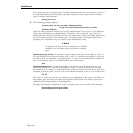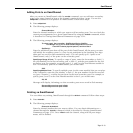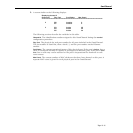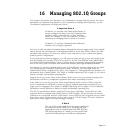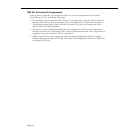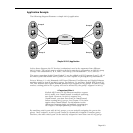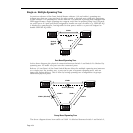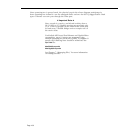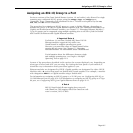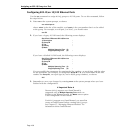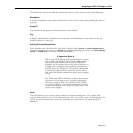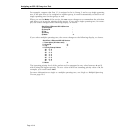
Page 16-4
Single vs. Multiple Spanning Tree
In previous releases of the Omni Switch/Router software (4.0 and earlier), spanning tree
support was done on a per port basis. In other words, a physical port could only participate
in one instance of a spanning tree on the network. If a network is passing both untagged and
IEEE tagged frames, single spanning tree support could lead to packets being lost. Lost pack-
ets could occur if a port specifically assigned to handle one type of traffic (e.g., IEEE 802.1Q)
is blocked by spanning tree, forcing traffic for that port to move to a port not assigned to
handle IEEE 802.1Q traffic.
Port Based Spanning Tree
In the above diagram, the physical connection between Switch 1 and Switch 2 is blocked by
spanning tree. No traffic can pass over the connected ports.
Release 4.1 (and later) of the Omni Switch/Router allows for multiple spanning tree instances
on a single port. Put another way, a port can be part of separate spanning trees, with no
impact on packet delivery. This is done by basing spanning tree configuration on groups
rather than physical ports.
Group Based Spanning Tree
The above diagram shows how traffic on VLAN 1 is blocked between Switch 1 and Switch 2,
12345678
123456
12345678
123456
12345678
123456
Switch 1
Switch 2
Switch 3
VLAN 1
VLAN 1
VLAN 2
VLAN 2
Blocked
Physical
Port
12345678
123456
12345678
123456
12345678
123456
Switch 1
Switch 2
Switch 3
VLAN 1 (Blocked)
VLAN 1
VLAN 2
VLAN 1
VLAN 2 (Blocked)
VLAN 2



